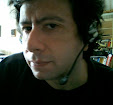The formulas from Sessa Aurunca (March 963) and Teano (October, 963) are similar in kind, only concerning different lands, though still within the Lombard duchy of Capua. These documents are invaluable in that their formulas are similar to the Placito, confirming that that is the language spoken around 960 A.D.
The fact this early Italian is used in a court proceeding seems to confirm that it Italian had been spoken (if not written) for a while and that Latin as we know it was unknown by the general public.
To sum it up, the importance of the Placito lies in that:
1. we know for certain that from 960 A.D. Italian is the language of government and
2. it is proof it was spoken and understood by all classes of society,
3. That people felt it to be a language apart from the Latin used in the courts and at mass.
Apart from the formula 'Parte Sancti Benedicti', a fossil genitive like 'Piazza San Marco' (St. Mark's Square) or Via Giuseppe Mazzini that appears in many Italian addresses today, and Tebe and bobe in the last three proceedings (the fossil datives of Lat. tibi and vobis), scholars have acknowledged that the Placito is linguistically emancipated from Latin: it also shows a certain resemblance to modern dialect of Campania (kelle, possette etc).
While it is not difficult to explain such spelling variants as ko, cco (c would be read as en. 'cho'), que and ke (ke being a phonetic trascription of Lat. que, 'that') as pronounced in middle Latin, 'sao' has been disputed.
'Sao', probably modeled on the Campanian 'ao' (it. ho, "I have"), dao (it. do, "I give"), stao (it. sto, "I stay") on analogy with Lat. sapis (it. sai, "you know") and sapit (it. sa, old Campanian sae) poses a bigger problem.
Although we are pretty sure about the spelling (it is the same in all of the four documents), its origin is still disputed since modern Capuan has "saccio" with palatal c (en. ch), while 'sazzo' is the only southern variant.
When we know that dialects are extremely conservative we are at pains to explain why there is no trace of 'sao' in today's Capuan. In the next chapter we will try to solve this puzzle with the aid of some educated guesses.




